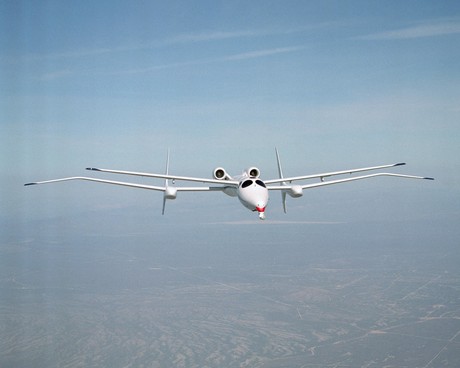100 Gbps tested via 70+ GHz RF backbone

City-based wireless transmission test will soon take to the air.
Northrop Grumman Corporation and the US Defense Advanced Research Projects Agency (DARPA) have set a new standard for wireless transmission by operating a data link at 100 gigabits per second (Gbps) over a distance of 20 kilometres in a city environment.
The two-way data link, which featured active pointing and tracking, was demonstrated on 19 January 2018 in Los Angeles.
The data rate is fast enough to download a 50 Gigabyte Blu-ray video in four seconds. The demonstration marked the successful completion of Northrop Grumman’s Phase 2 contract for DARPA’s 100 Gbps (100G) RF Backbone program.
The 100G system is capable of rate adaptation on a frame-by-frame basis from 9 to 102 Gbps to maximise data rate throughout dynamic channel variations. Extensive link characterisation demonstrated short-term error-free performance from 9 to 91 Gbps, and a maximum data rate of 102 Gbps with 1 erroneous bit received per 10,000 bits transmitted.
The successful data link results from the integration of several key technologies. The link operates at millimetre wave frequencies (in this case, 71–76 GHz and 81–86 GHz) with 5 GHz of bandwidth and uses a bandwidth efficient signal modulation technique to transmit 25 Gbps data streams on each 5 GHz channel.
To double the rate within the fixed bandwidth, the data link transmits dual orthogonally polarised signals from each antenna. Additionally, the link transmits from two antennas simultaneously (spatial multiplexing) and uses multiple-input-multiple-output (MIMO) signal processing techniques to separate the signals at two receiving antennas, thus again doubling the data rate within the fixed bandwidth.

According to Louis Christen, director, research and technology, Northrop Grumman, “This dramatic improvement in data transmission performance could significantly increase the volume of airborne sensor data that can be gathered and reduce the time needed to exploit sensor data.
“Next-generation sensors such as hyperspectral imagers typically collect data faster, and in larger quantity than most air-to-ground data links can comfortably transmit,” said Christen. “Without such a high data rate link data would need to be reviewed and analysed after the aircraft lands.”
By contrast, a 100G data link could transmit high-rate data directly from the aircraft to commanders on the ground in near real time, allowing them to respond more quickly to dynamic operations.
The successful 100G ground demonstration sets the stage for the flight test phase of the 100G RF Backbone program. This next phase, which began in June, demonstrates the 100G air-to-ground link up to 100 Gbps over a 100 km range and extended ranges with lower data rates.
The 100G hardware will be flown aboard the Proteus demonstration aircraft developed by Northrop Grumman subsidiary Scaled Composites.
Northrop Grumman’s 100G industry team includes Raytheon, which developed the millimetre wave antennas and related RF electronics, and Silvus Technologies, which provides the key spatial multiplexing and MIMO signal processing technologies.
Please follow us and share on Twitter and Facebook. You can also subscribe for FREE to our weekly newsletter and bimonthly magazine.
Originally published here.
RFUANZ report: setting the frequency for success in 2025
Last year brought a lot of internal change for RFUANZ, but the association has hit the ground...
ARCIA update: an extended event calendar for 2025
With the addition of Tasmanian events and a conference in Adelaide in September, 2025 will see...
ARCIA update: plans for 2025
ARCIA will be holding a mixture of workshop, conference and networking events in 2025, in the...





